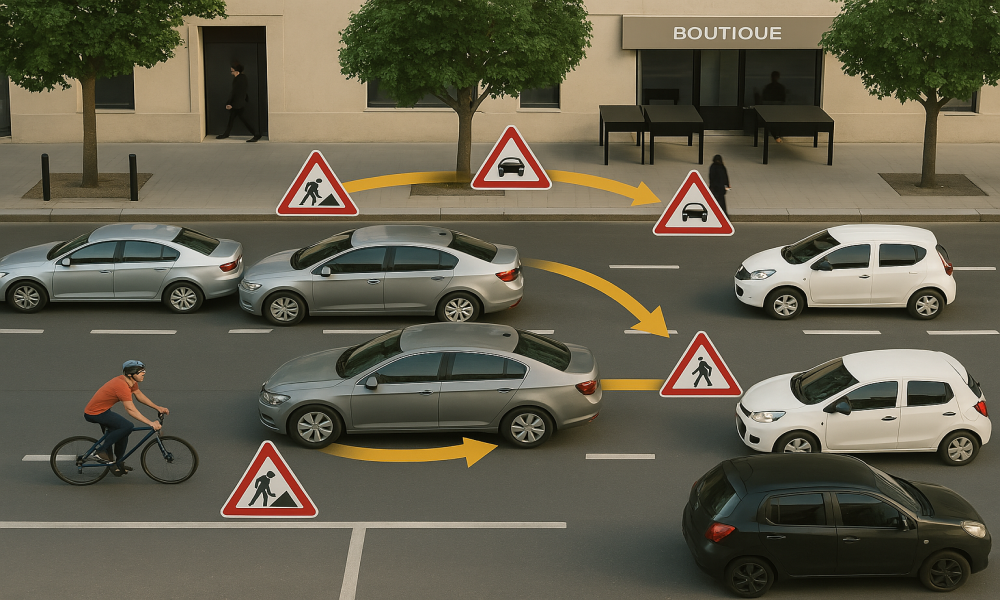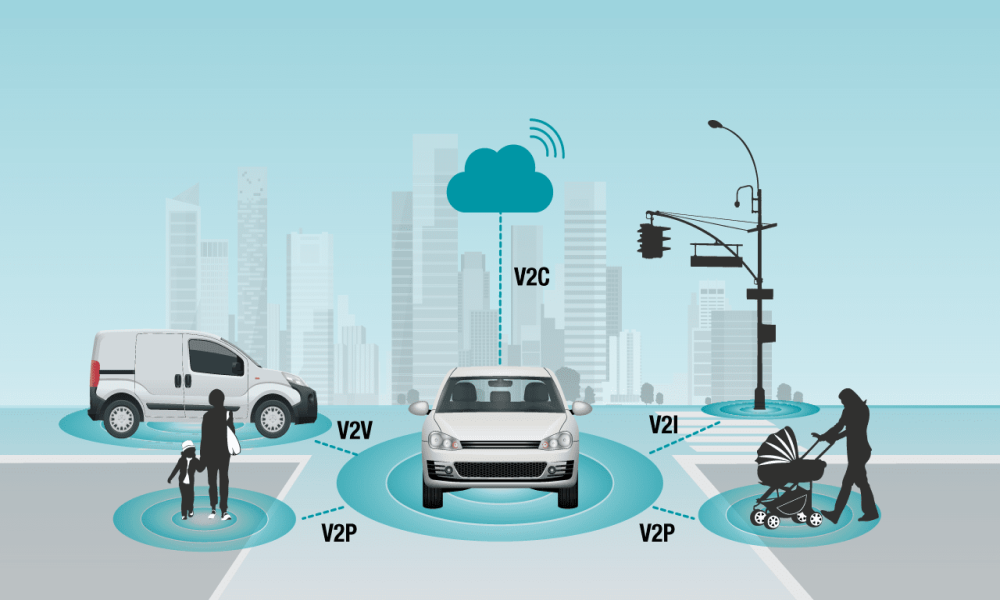The evolution of Intelligent Transport Systems (ITS) and Cooperative, Connected, and Automated Mobility (CCAM) hinges critically on robust and reliable communication technologies. For years, Dedicated Short-Range Communications (DSRC), primarily based on IEEE 802.11p, was the frontrunner for Vehicle-to-Everything (V2X) communication. However, with the advent of 5G cellular communication technologies and their promise of ultra-low latency, high bandwidth, and widespread coverage, the landscape has shifted, creating a contentious debate about the optimal path forward. This article explores the challenges DSRC faces in CAV/CCAM applications when compared with 5G, and crucially, what competitive edge DSRC might still hold in this rapidly evolving segment.

The DSRC Promise: A Paved Road Less Travelled
DSRC, or ITS-G5 in Europe, was designed specifically for V2X communications, operating in the 5.9 GHz spectrum band. Its foundational strength lies in its direct communication capabilities: vehicle-to-vehicle (V2V), vehicle-to-infrastructure (V2I), and vehicle-to-pedestrian (V2P) messages are exchanged directly between devices without relying on cellular networks. This "ad-hoc" nature offers inherent advantages for safety-critical applications. DSRC boasts low latency (typically in milliseconds), essential for real-time collision avoidance, emergency braking, and other safety messages where every millisecond counts. Its maturity, having undergone extensive testing and standardisation for over a decade, is another significant factor. A large DSRC ecosystem has been developed, with ready products and interoperable solutions. Furthermore, DSRC's ability to "see around corners" (Non-Line-Of-Sight or NLOS communication) is a key advantage, facilitating communication even with obstructions, and it is optimised for high mobility, operating effectively at speeds up to 500 km/h with a communication range often exceeding 1 km. Its built-in security and privacy mechanisms, designed specifically for vehicular communication, offer strong protections with minimal computational overhead.
The 5G Ascendancy: A Broader and Deeper Network
Enter 5G, the fifth generation of cellular technology, and its V2X counterpart, Cellular V2X (C-V2X). Unlike DSRC's direct communication model, C-V2X offers a hybrid approach, encompassing both direct communication (PC5 interface, similar to DSRC) and network-assisted communication (Uu interface, leveraging the cellular network). This dual capability is a major differentiator. The advantages of 5G for CAV/CCAM are substantial:
1. Massive Bandwidth and Throughput: 5G offers significantly higher data rates (up to 10GB per second) and throughput potential, crucial for advanced autonomous driving features like sharing high-definition sensor data, real-time local map updates, and coordinated driving manoeuvres. This capacity far exceeds DSRC's capabilities.
2. Ultra-Low Latency: While DSRC boasts low latency, 5G aims for even lower latencies (1-5 milliseconds), which is paramount for the most demanding autonomous driving functions where instantaneous decision-making is vital.
3. Wider Coverage and Scalability: Leveraging existing and expanding cellular infrastructure, 5G promises broader coverage, including rural areas, and inherently supports a far greater number of connected devices per square kilometre (potentially 1 million). This scalability addresses a key limitation of DSRC, which can suffer from congestion in dense traffic environments due to its fixed bandwidth.
4. Network-Assisted Services: The V2N component of C-V2X allows for cloud-based services, remote vehicle control, predictive maintenance, and efficient traffic management systems, offering a richer suite of applications beyond basic safety messages.
5. Interoperability and Ecosystem: 5G's broader interoperability within the wider smart city and IoT ecosystem makes it an attractive investment for cities and industries looking for multi-purpose connectivity solutions. The 5G Automotive Association (5GAA), a strong consortium of automotive and telecom giants, further drives the adoption and standardisation of C-V2X.

The Challenges DSRC Faces
Despite its historical advantages and dedicated design, DSRC faces significant hurdles in the evolving CAV/CCAM landscape:
1. Spectrum Reallocation: In some key markets, notably the United States, portions of the 5.9 GHz spectrum previously allocated exclusively for DSRC have been reallocated for unlicensed Wi-Fi use, severely limiting DSRC's dedicated bandwidth and casting uncertainty over its future deployment.
2. Lack of Widespread Deployment: While standardised for a long time, DSRC has struggled with widespread deployment. Automakers have been hesitant to incorporate DSRC without assurances of broad adoption across the industry and substantial roadside unit (RSU) infrastructure. The cost and logistical challenge of deploying RSUs on a mass scale, estimated to be hundreds of millions or even billions of pounds and taking up to 15 years, remains a significant barrier.
3. Limited Scalability for Advanced Use Cases: While sufficient for basic safety messages, DSRC's fixed bandwidth struggles to meet the high data throughput requirements of more advanced cooperative driving and autonomous vehicle applications, such as sensor sharing and high-definition map updates.
4. Competition and Industry Momentum: The strong industry push behind C-V2X, particularly with the backing of major cellular and automotive players, has shifted the momentum away from DSRC in many regions. Many countries, including China, are heavily investing in cellular-based V2X technologies.
5. Backward Compatibility Concerns: While next-generation DSRC (IEEE 802.11bd) aims to improve performance and maintain backward compatibility, the fundamental incompatibility between DSRC and C-V2X creates a fragmentation issue, posing challenges for widespread adoption and interoperability in a mixed environment.

DSRC's Competitive Edge: Niche Strengths and Complementary Roles
Despite the formidable challenges, DSRC is not without its competitive edge, particularly in specific use cases or as a complementary technology:
Direct, Decentralised Communication for Safety: DSRC's peer-to-peer nature for V2V and V2I communication makes it highly reliable for safety-critical messages. It doesn't rely on cellular network coverage or availability, which can be crucial in areas with weak or no cellular signal, or during network outages (e.g., during disasters). This directness bypasses potential bottlenecks and single points of failure inherent in network-centric approaches.
Proven Technology for Basic Safety: For foundational "Day 1" safety applications like forward collision warning, intersection movement assist, and blind spot warning, DSRC has been thoroughly tested and proven. Its simplicity and dedicated spectrum (where available) make it an efficient solution for these immediate safety enhancements.
Lower Overheads for Basic Messages: For transmitting small, frequent safety messages, DSRC can be more efficient and have lower computational overheads compared to a full cellular stack.
Resilience and Robustness: DSRC's design, derived from Wi-Fi, has shown resilience to physical obstacles and extreme weather conditions, and it can operate at high speeds, making it robust for dynamic vehicular environments.
Cost-Effectiveness for Localised Deployments: For highly localised V2X applications, such as electronic toll collection or specific intersection safety warnings where a few roadside units suffice, DSRC can be a more cost-effective deployment than building out a comprehensive 5G infrastructure purely for V2X.
Potential for Hybrid Architectures: Rather than an "either/or" scenario, a hybrid approach could leverage the strengths of both. DSRC could handle immediate, safety-critical V2V/V2I communication, while 5G provides the broader V2N connectivity for infotainment, advanced mapping, and cloud services. This layered approach could offer the best of both worlds, ensuring both robust local safety and extensive network-enabled functionality.

Two Worlds Living Together?
The competition between DSRC and 5G for CAV/CCAM applications is a microcosm of the broader technological shifts in the ITS and mobility sectors. While 5G, with its superior bandwidth, scalability, and network-centric capabilities, appears poised to dominate the future of advanced autonomous driving and connected services, DSRC retains a significant competitive edge in its core strength: direct, reliable, and low-latency communication for immediate safety-of-life applications.
The question isn't necessarily about outright replacement, but rather about optimal integration and complementary roles. As the debate continues, and with the ratification of next-generation DSRC protocols like IEEE 802.11bd, the future of intelligent transportation may well lie in a judicious blend of both technologies, where DSRC provides the foundational, peer-to-peer safety layer, and 5G unlocks the vast potential of a fully connected and cooperative mobility ecosystem. The industry's challenge will be to navigate the standardisation complexities, overcome deployment hurdles, and foster an environment where both technologies can contribute to safer, more efficient, and smarter roads for all.
150x150.png)